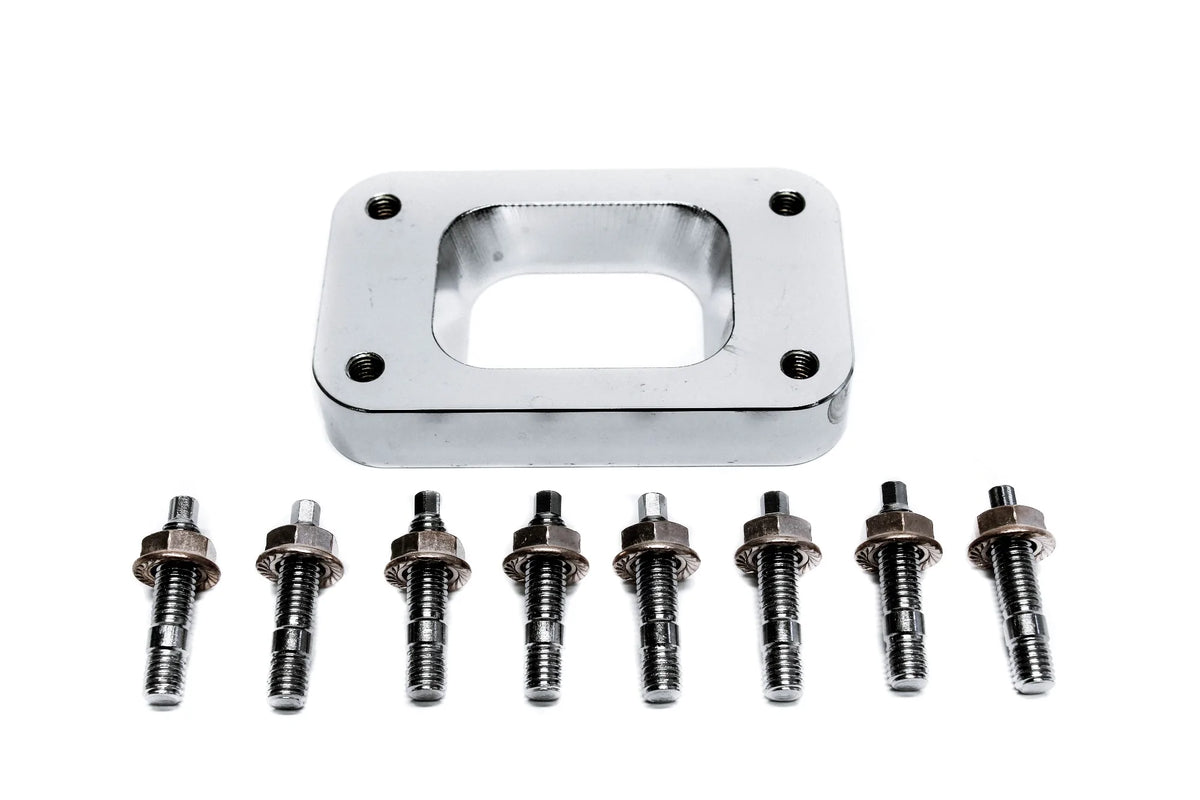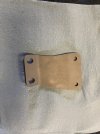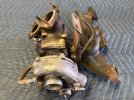Following several of the comments in posts #507 through 511:
The UT manifold I got was reported to still have the factory support bracket/plate (correctly pictured by
@HeavyD above) installed when the manifold was removed. However there were several cracks in the manifold despite the bracket. Some of them seemed pretty severe. Therefore I suspect the cast iron manifold may be prone to cracking anyway (even with the bracket). Perhaps due to extreme heat cycles, or maybe some sort of internal vibrations/harmonics, or perhaps the exhaust manifold gasket allows too much movement of the manifold at the top but the rigid support bracket does not at the bottom?? Or maybe mine had been severely abused by a prior owner before the seller I got it from. But these are old cast iron manifolds with a extremely hot turbo mounted to them, so cracking isn't surprising.
The cracks on mine were also repaired (welded) which resulted in quite a bit of warpage and even twisting. It took a
lot of resurfacing to make it true at the head mating surface. In fact, the warpage and resurfacing resulted in some of the mounting holes (especially towards the ends of the manifold) to not align properly with the mounting studs on the head. So I enlarged those holes. But I also had to do some "port matching" because the manifold's ports no longer aligned with the head's - due to the twisting. Not ideal but I found the same limited options that
@HeavyD has.
Something to keep in mind is tubular turbo manifolds (in general) are also prone to cracking. Mainly due to their thinner walled construction not able to support the turbo's weight or excessive heat. So buying one may not be the total solution as we might hope.
If I were to build another turbo engine for the X (mine utilizes the original 1500 X engine) I would start fresh. First I'd get one of the tubular manifolds and then modify it with additional supports or braces to try and prevent cracking. Second I go with a new T25 turbo. Not only due to the mounting flange issue, but also for its more modern design features (much more efficient than the original IHI), and to gain the added power potential (over the original turbo) as
@Bjorn Nilson described. Honestly if you look at the prices for the tubular manifold and some of the affordable new turbos it isn't that bad. But it could also get very expensive depending on what components you choose.
That being said, if you already have a UT manifold and turbo then it doesn't make sense (financially) to throw it away and buy all new stuff. I'd have the cracks repaired and the mating flange resurfaced and keep what you have. In the end that was my decision anyway.






